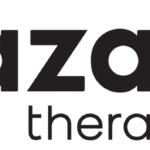Support WBUR
The MBTA’s long-running effort to replace its Red and Orange Line fleets faced renewed schedule pressures this fall, with transit officials highlighting a recent shift toward more consistent Red Line production as the Orange Line order nears its finish line.
Shipments of Chinese-manufactured train shells have slowed in recent months — in part because of ongoing federal forced-labor reviews — contributing to delays that pushed the builder past a September delivery deadline for the Orange Line.
Although the federal reviews have introduced uncertainty into the supply chain, MBTA leaders said the broader fleet-replacement program continues to move forward, supported by a production strategy that now places greater emphasis on keeping Red Line deliveries on track.
The manufacturer of new MBTA Red and Orange Line fleets missed the September deadline to complete all 152 Orange Line cars, after U.S. Customs officials detained multiple shipments of train shells and components under a federal forced-labor law. Transit officials say the builder, China Railway Rolling Stock Corporation MA (CRRC), remains on pace to finish the Orange Line order by year’s end.
The MBTA expects to receive another pair of Orange Line cars on Thursday, bringing the total to 150. The final two cars are scheduled to arrive next month, closing out the 152-car order required under the contract.
The new Orange Line fleet, which began entering service in September 2022, has been large enough to support reliable operations, officials said, allowing the T earlier this year to direct CRRC to prioritize Red Line production instead.
So far, the T has received 58 new Red Line cars, with two more expected in December. Those vehicles — part of a 252-car replacement fleet — are running years behind schedule.
The project originated under Gov. Deval Patrick’s administration in 2014, has been buffeted by repeated manufacturing setbacks, and underwent a major contract “reset” last year that waived some penalties, lifted the contract’s value above $1 billion and set a new completion deadline of late 2027.
A new wrinkle emerged in May, when U.S. Customs and Border Protection began holding newly shipped car shells in American ports as authorities review whether CRRC’s supply chain complies with the Uyghur Forced Labor Prevention Act. The 2021 law bars imports linked to forced labor in China’s Xinjiang Uyghur Autonomous Region and places a high burden of proof on importers to document that their goods were made with an ethical supply chain.
CRRC ships partially assembled shells from China to the U.S., where final assembly is performed at its Springfield facility by a workforce of more than 400. Components from 32 states feed into U.S. assembly, according to General Manager Phil Eng.
U.S. Customs’ review has required multiple rounds of documentation from CRRC. In July, Eng said the company was “in the midst of answering the last round of questions,” adding he was “very confident” the parties would navigate the review.
CRRC spokesperson Lydia Rivera told WBUR the company has maintained “rigorous compliance reviews” and that “no entity involved in these shipments is linked to any violation” of the law.
Erik Olson, executive director of the Rail Security Alliance, encouraged the federal reviews, saying, “We are grateful for U.S. Custom’s attention to CRRC train shells and components and the materials within the full supply chain, ‘requiring full traceability of certain raw materials—down to the level of ore extraction and smelting.'”
Despite the detainments, both CRRC and the MBTA say the Springfield line continues to operate.
Eng said this summer that enough shells were in Massachusetts to “keep the workforce working through the end of the year.”
MBTA spokesperson Joe Pesaturo said this month the agency “continues to work closely with CRRC MA to keep the production line moving at the Springfield plant” and “ensure that each shipment of car shells is accompanied by the necessary documentation required by U.S. Customs officials.”
The MBTA’s October bondholder statement acknowledged the detainments and said CRRC is “working to rectify the situation.”
The document reiterates that the full vehicle program includes 404 heavy-rail cars — 152 for the Orange Line and 252 for the Red Line — each equipped with wider doors, ADA-dedicated spaces, LCD passenger information systems, LED lighting, redundant train-control and HVAC systems and upgraded monitoring and communication technology. The vehicle investments accompany systemwide upgrades to maintenance facilities, track and signaling.
The T is approaching the long-sought milestone of completing the Orange Line replacement, more than a decade after state officials first awarded the contract. But the beleaguered Red Line program, still not half delivered, remains vulnerable to external shocks from the federal inquiry.
For now, the last two Orange Line cars are slated for December delivery, and the Red Line has a two-car delivery schedule for next month as well, as its multi-year push toward full fleet replacement continues.
Support WBUR
Support WBUR












